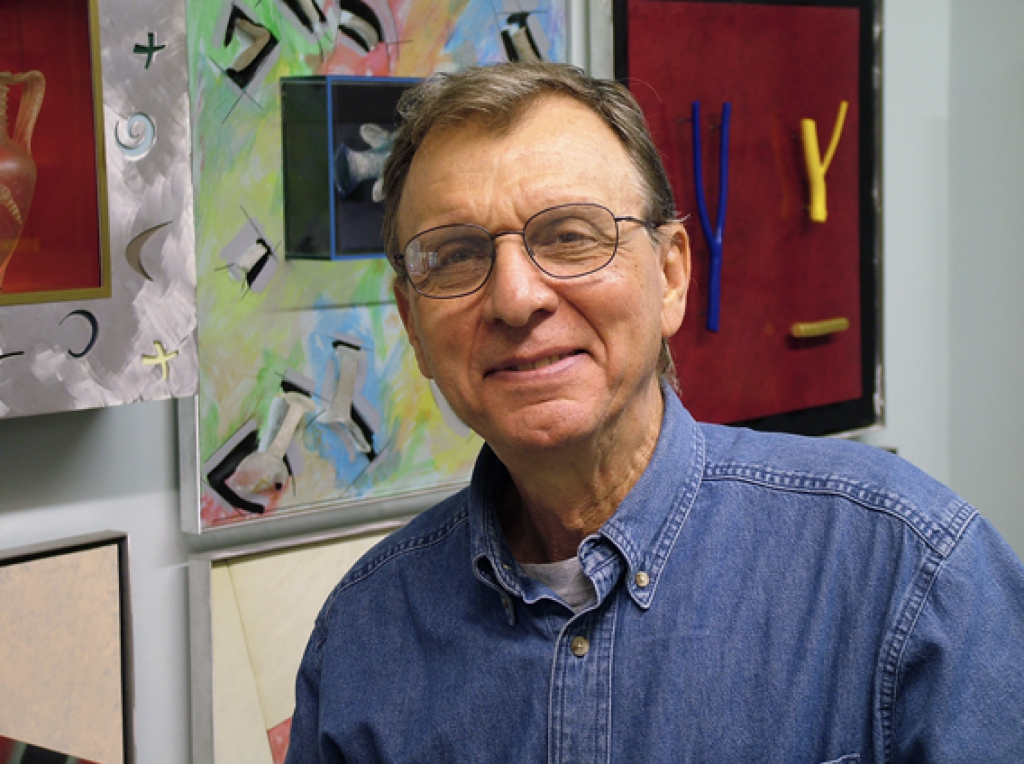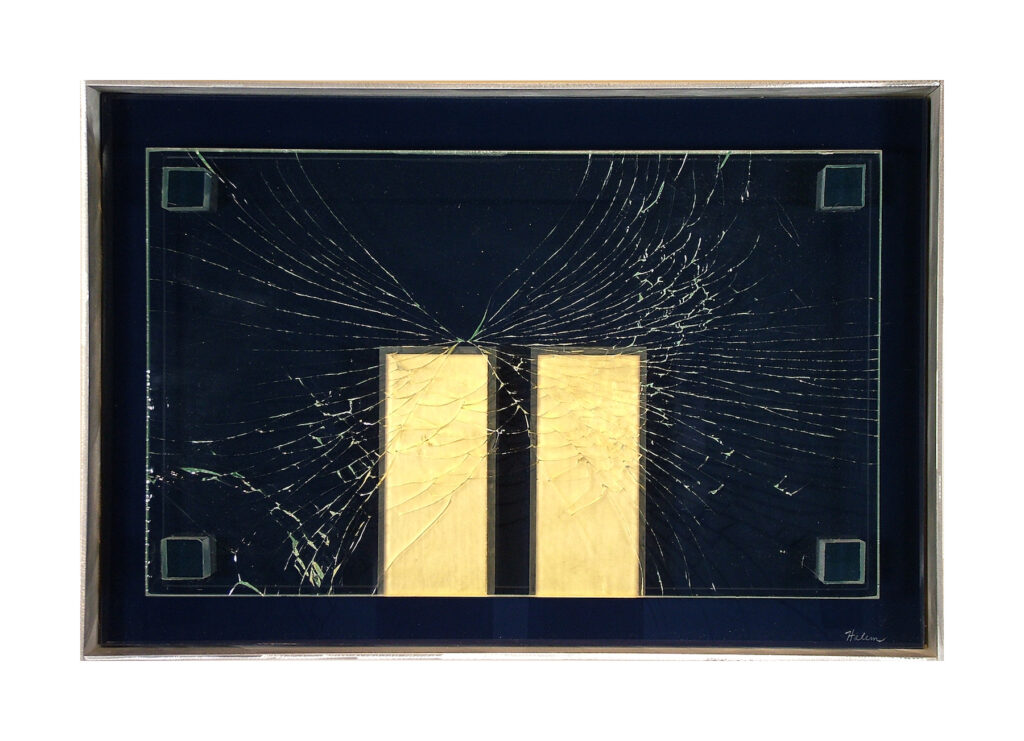On the morning of Sept. 11, 2001, Kent State Professor Emeritus Henry Halem was at home. Like many Americans, he watched the second plane collide with the south tower in real time on television. “I couldn’t believe what I was watching,” he recalled. “I couldn’t imagine something like that could actually happen.”
Halem, a Kent resident who ran the university’s glass program for nearly three decades before retiring in 1998, said he carried his grief and anger about 9/11 with him for about 10 years before he was able to make art about it.

It took finding the right material — the same type of glass that’s used in vehicle windshields — to “help give expression to what I was feeling” about that day, he said. He ended up creating a series of nine glass wall pieces to memorialize those killed in the attacks. Today, they’re hanging in Halem’s studio, which is closed to visitors because of Covid. But all the pieces are visible on Halem’s website.
Halem spoke with The Portager ahead of the 20th anniversary of the attack to explain how he created the pieces and to reflect on what they mean to him. (The interview is edited for length and clarity.)
How would you describe the art that you make?
Some of my pieces, like the May 4 piece, my work based on Vietnam, and the Iraq War piece, are memorials to traumatic events in our country’s history. They have a narrative context and depend a lot on metaphor. While they do have an abstract quality, the events they’re based on are fairly recognizable when you see them.
In this case, for the Sept. 11 narrative, I ended up making about nine pieces that dwelled on one historical event, which is very rare for me. One piece led to another, and I felt very good about these works — more so than a lot of what I’d done in the past.
You said in your artist’s statement that you “immersed yourself in the narrative of the event” in order to make the pieces. What specifically did you focus on?
Seeing the footage of 9/11, you place yourself in that situation: Going to work and sitting at your desk, like you’ve done every morning for the last 10 years, in the building that you’re familiar with — and then a plane flies into the building. How could you not imagine yourself in that horrendous situation without feeling the emotion of it?
As an artist, and as a human being, I needed to express the anger that I felt in living through that day (of course, from afar) and try to alleviate the anxiety that I was feeling about this period in our country. Making art is what keeps me on the straight and narrow — or, you might say, keeps me sane.

What was special about the glass you worked with?
It’s safety glass that’s used in the windshield of your car — two pieces of glass that have a Mylar sheet of plastic between them — so if your windshield were to break, it wouldn’t fall apart, just crack. I found that if I held a piece of wood on the glass, then took a hammer and hit the wood hard enough, the glass would break in a spider web pattern.
To put together the pieces, I sandblasted the images of the towers onto a piece of glass, broke the glass, and then mounted it about an inch away from the background piece of glass, so that it appears three-dimensional. I didn’t feel I could use any real color, because it was a somber event. It was dark and grim. It didn’t conjure up in my mind anything that was colorful. The only color I used was red glass in one of them, and silver and gold for the World Trade Center in others, to create a strong contrast between the background and foreground.
To me, the simplicity of the pieces is striking. And the shattered glass illustrates how the effects of that day reverberated.
That’s absolutely on point. It’s just the geometry of those buildings, which I reduced to two-dimensional rectangles, and the broken glass — no more, no less.
What is the meaning of these pieces?
Well, they bring people into the event. The broken glass is a metaphor for how fragile our existence is, especially in today’s world. You never have the expectation when you’re going to school or walking out on the street that someone’s going to come and take your life away. But unfortunately, that’s what happens — violence is a part of our daily lives. A day doesn’t go by when there isn’t a shooting somewhere in this country. How do we get up in the morning and deal with this?
As an artist, I go about my life, and I express myself in relationship to the world around me. And these 9/11 pieces are my expression of my anger over what we don’t have control over.
When did you first show the series, and what was the response?
They’ve only been shown once at a small show I had here in Kent. You know, it’s funny. When you make the pieces, as an artist, you don’t really get to see them outside of the location where they were created. They’re sitting on a table surrounded by all kinds of studio junk or hanging in storage, and you never really get to see them the way they’re meant to be seen.
That’s why it’s important, at least for me, to have a show to hang them, sit with them and really see what I’ve created. And if I’ve been successful, when I look at them, I’ll feel the whole is greater than the sum of the parts involved. That’s when the work is right.
That’s the feeling I got from those pieces. It actually moved me when I finally got to see them all together. And that doesn’t happen that often.
Lyndsey Brennan is a Portager general assignment reporter. She is completing her master's degree in journalism at Kent State and is an alumna of the Dow Jones News Fund internship program. Contact her at [email protected].


